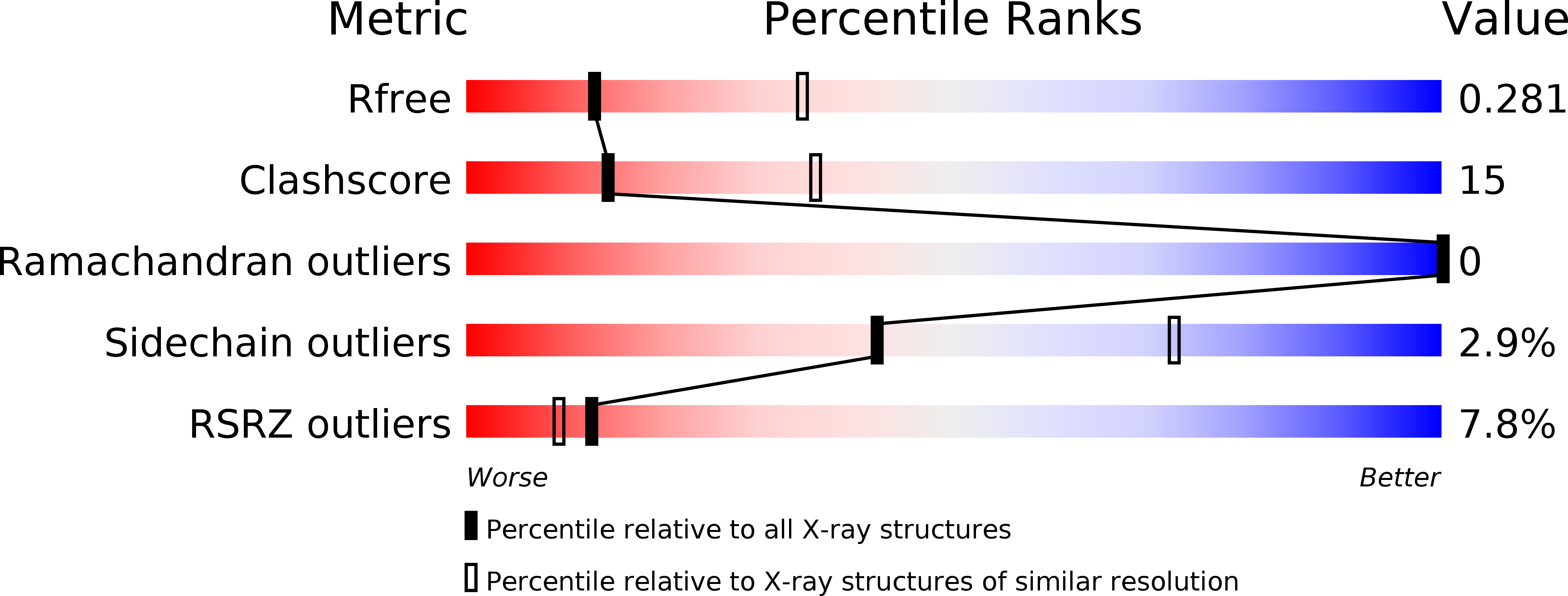
Deposition Date
2014-07-01
Release Date
2015-02-04
Last Version Date
2024-11-06
Entry Detail
PDB ID:
4TWT
Keywords:
Title:
Human TNFa dimer in complex with the semi-synthetic bicyclic peptide M21
Biological Source:
Source Organism:
Homo sapiens (Taxon ID: 9606)
synthetic construct (Taxon ID: 32630)
synthetic construct (Taxon ID: 32630)
Host Organism:
Method Details:
Experimental Method:
Resolution:
2.85 Å
R-Value Free:
0.28
R-Value Work:
0.22
R-Value Observed:
0.22
Space Group:
P 32 2 1


